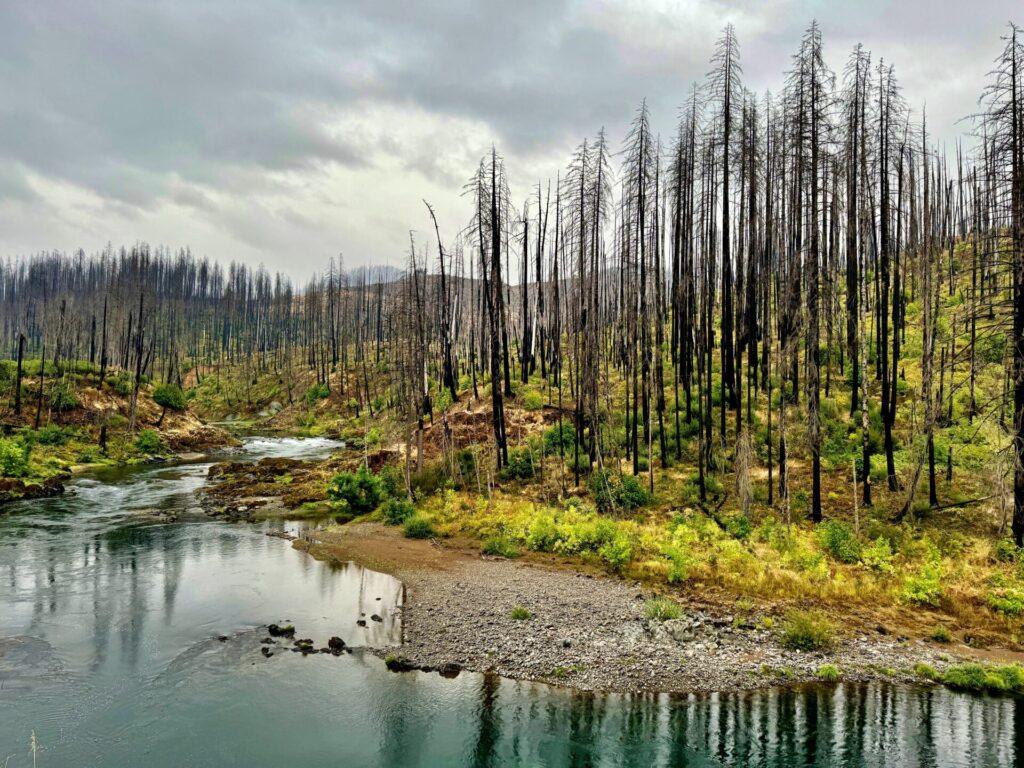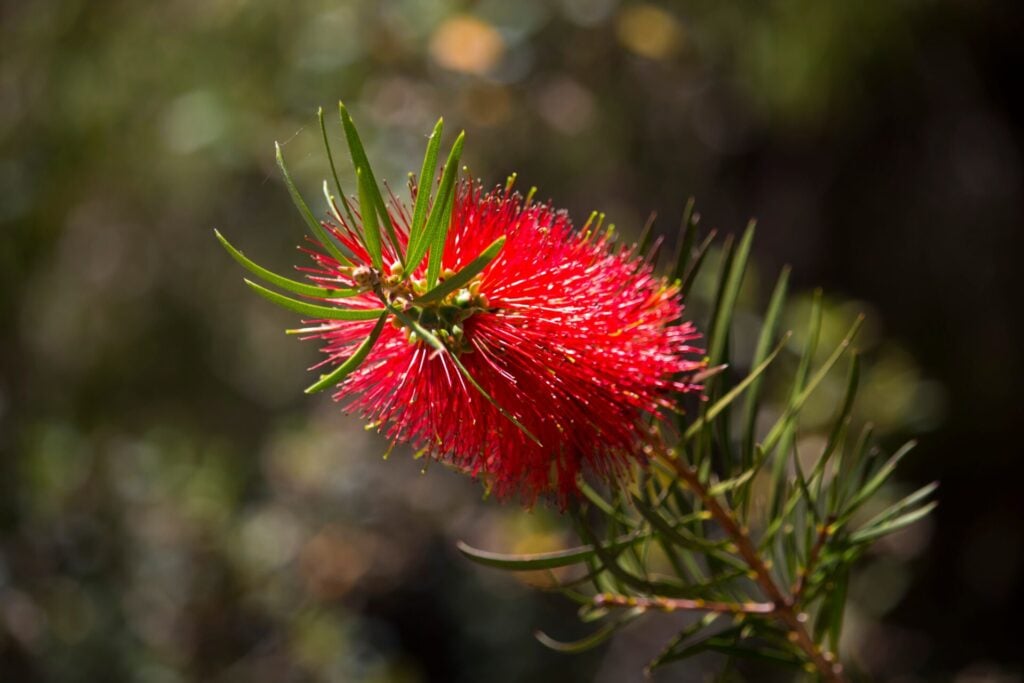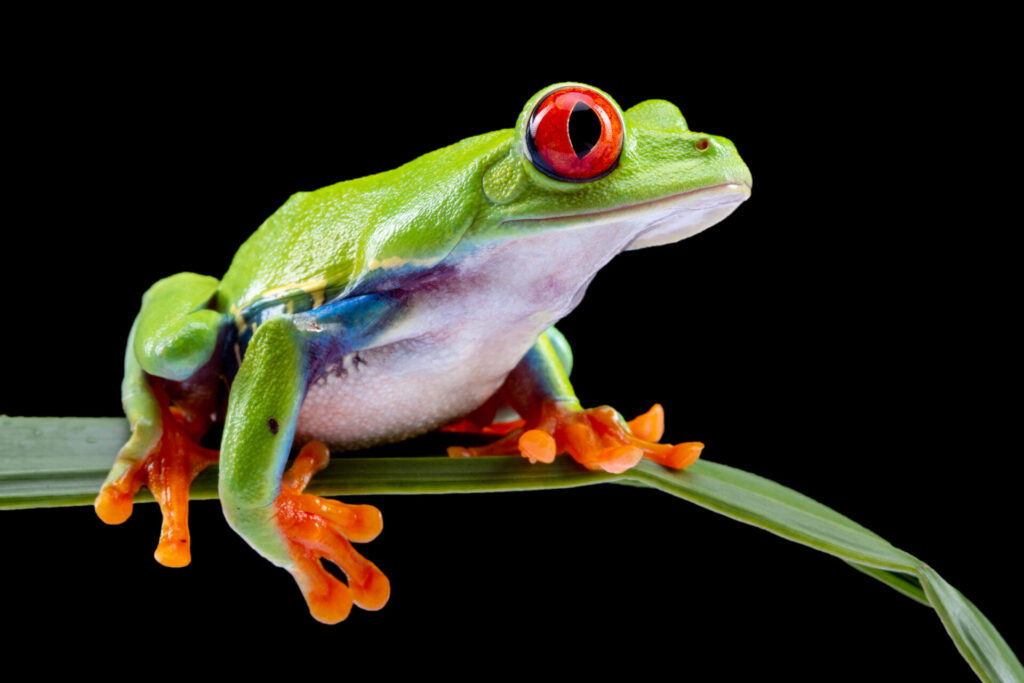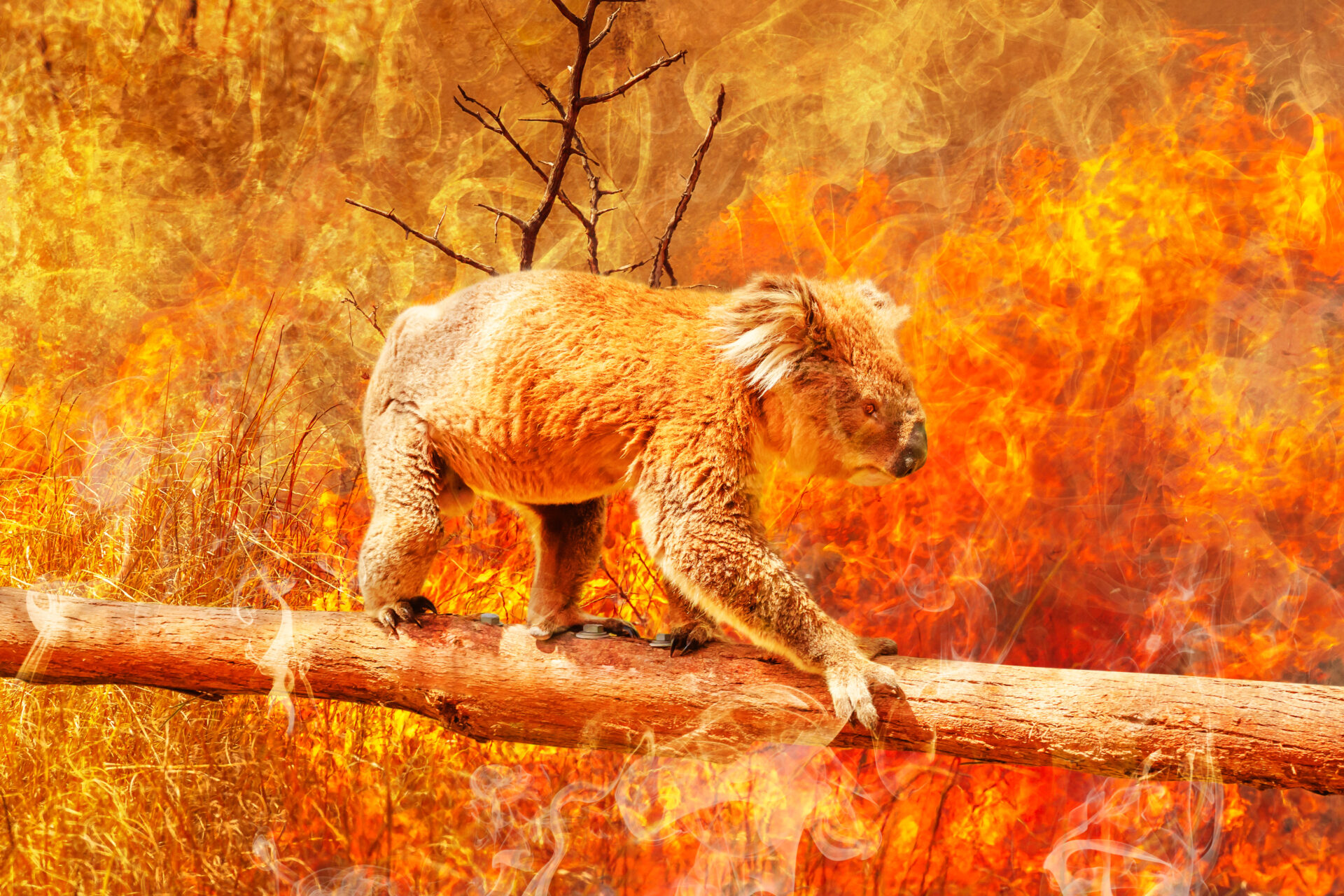Raging wildfires ripping through countryside the world over has been all too familiar headline news in recent years. Remarkably, in some burnt forests and scorched savannas, life literally pushes through. From blaze-loving beetles to heat-seeking seeds, fire-resilient species have found a way to reap the benefits of living on an increasingly flammable planet.
While wildfire scars many landscapes irrevocably, it also acts like a reset for certain ecosystems. Ash can make soil more nutrient rich, while some grasslands are rejuvenated by seasonal fires that flush out pests and parasites, bolstering biodiversity in the process.
Burnt forests aren’t necessarily lifeless either, with some relying on the natural cycle of fire and regrowth. ‘Many regions in North America depend on fire to maintain healthy forests,’ Andrew Stillman, ecologist at NYC’s Cornell Lab of Ornithology, tells The Ethicalist. ‘The plants and animals in these areas are adapted to fire, meaning that they can thrive in the new habitats which are created by forest fire.’

Some species don’t just flee the flames, they depend on it to eat, breed and elude predators.
Birth In The Flames
Fire evasion comes in many shapes and forms, both in the animal and plant kingdom. Some flora use fire activation to germinate and disperse their seeds. Native to Australia, the bottlebrush shrub harnesses the heat of forest flames to break the dormancy of their seeds. For other species – such as South Africa’s flowering Leucadendron linifolium – smoke is the stimulus. In this region’s historically wildfire-vulnerable and water-scarce Cape Floral Kingdom, endemic Fynbos plants have evolved fire adaptations over the course of three million years.

When it comes to trees, some have become experts in fire resistance. New Mexico’s Ponderosa pines, for example, armour themselves with an ultra-thick bark to fend off fires. Australia’s oil-rich Eucalyptus trees, meanwhile, possess invisible buds beneath their bark, which sprout new shoots when triggered by stress, like extreme heat.
Australia’s oil-rich Eucalyptus trees possess invisible buds beneath their bark, which sprout new shoots when triggered by stress, like extreme heat
Ten thousand miles away in north-central and northeastern America, pine trees such as Lodgepole and Jack protect their seeds inside cones that are glued shut with a resin that only melts when it gets hot enough, releasing the seeds.
Line Of Fire
It’s not only plants that have forged a unique relationship with fire. Some animals don’t just tolerate it, they seek it out. Take the thumbnail-sized black fire beetle, for example. Whether in Poland’s primeval forests or the foothills of California’s Sierra Nevada, the pyrophilous (fire-loving) insect is able to locate forest fires blazing dozens of miles away using infrared radiation receptors. It then lays its eggs in the blackened bark of smouldering nutrient-rich wood to give its offspring the best start in life.
The black fire beetle is able to locate forest fires blazing dozens of miles away using infrared radiation receptors. It then lays its eggs in the blackened bark of smouldering nutrient-rich wood to give its offspring the best start in life.
In Sub-Saharan Africa, ground-nesting Temminck’s coursers are masters of camouflage, laying ash-black eggs in the aftermath – burnt bushes and grass – of savannah fires. Also choosing to stay in the line of fire is Australia’s Macleay’s marsupial mouse, which escapes the wrath of wildfires by sending itself to sleep in a torpor or semi-hibernation state.
Blaze Runner
Reptiles have also found a way to be fire-resistant. Eastern fence lizards, which live mainly in the southeastern United States, use their speed to outrun wildfires. A paper published in Science Direct reports that some of Southern California’s Western Fence lizards have even learnt to detect the sound of fire.
Another reptilian burn specialist is the frilled lizard. A tree-hugging resident of Northern Australia’s Kakadu National Park, they evacuate to higher ground to escape the brunt of bushfires, often sheltering in hollow termite mounds. Sadly, this survival strategy is slowly but surely being sabotaged by a flammable invasive gamba grass that’s sending the flames higher into the tree canopy where the lizards hideout.

Fire-Proofed Frogs
A surprising survivor of Australia’s darkest summer was a tiny frog. ‘Since tree frogs would be bound to moist refuges up in the canopy, we expected that these refuges and the frogs would be incinerated during fires which completely consume the canopy,’ Dr Chad Beranek tells The Ethicalist. A Doctor of Philosophy in Environmental Science at Australia’s University of Newcastle, Beranek was the lead researcher in a study investigating the impact of the 2019 bushfires on 35 threatened frog species in northeast and southeast New South Wales (NSW).
The study found that rainforest amphibians are particularly vulnerable to fire impacts, but tree frogs were the anomaly, having held out in completely burnt areas. ‘This probably highlights the ability of large trees [and their deep hollows] to insulate animals such as frogs from severe fires, but more research is needed to confirm this idea,’ he says.

Sadly, not all frogs fared so well. Feeling the full force of wildfires was the Pugh’s Mountain Frog. ‘This is concerning because it is a Gondwana Rainforest [a World Heritage-listed ecosystem] relict that has evolved in Australia as long as the platypus, and has traits that make it as unique as the platypus in the frog world,’ Beranek says. ‘Species in the Philoria genus are long-lived and don’t reach sexual maturity until two to three years, making them particularly vulnerable to decline if there’s disturbance.’
After Burn
Surviving a wildfire is one thing, but depending on it to survive is what distinguishes the black-backed woodpecker from its Northern Californian avian cousins.
‘They eat juicy beetle larvae that live inside of dead wood, so a forest of dead trees is like a plaza of fast-food restaurants for a black-backed woodpecker’
Andrew Stillman, Ecologist at NYC’s Cornell Lab of Ornithology
‘They eat juicy beetle larvae that live inside of dead wood, so a forest of dead trees is like a plaza of fast-food restaurants for a black-backed woodpecker,’ Andrew Stillman reveals. Not only do they provide access to food, but suitable nest sites too, explains Stillman, who’s spent years tracking the movements of adult and fledgling black-backed woodpeckers with the help of featherweight radio transmitters.
‘These transmitters give us a secret window into the birds’ movements,’ he says, adding, ‘areas of the forest burned at high severity – where all the trees are dead – provide a feast for black-backed woodpeckers. But parts of the forest burned at low severity, with live trees remaining, act like a nursery to protect the young. So, a black-backed woodpecker looking for a great place to build your home, should put it between the two!’

‘These lovers of pyrodiversity – which refers to the variance in size, severity and age of burned patches – also blend in much better against old-growth charred trees thanks to their black-grey colouring. In the spring, the woods in California’s montane conifer forests ring with the drumming sounds of woodpeckers excavating nest cavities in the dead trees,’ Stillman says.
Black-backed woodpeckers aren’t the only species to benefit from blazes. Stillman goes on to explain that ‘the nest cavities created by woodpeckers become important nesting locations for birds like wrens, bluebirds and swallows in subsequent years.’
An online tool developed by Stillman and his team has made these woodpeckers a flagship species for post-fire recovery. ‘Often there isn’t time (or the resources) to conduct years of wildlife surveys before beginning to implement a forest management plan in a recently burned area,’ he says. Developed alongside the US Forest Service, the tool ‘offers a way to predict black-backed woodpecker densities at fine spatial resolution within months of the fire burning,’ he explains. ‘By helping forest managers understand the most important areas for black-backed woodpeckers, it will make it easier to safeguard these areas for wildlife,’ Stillman adds.
Fire can be an agent for change – both good and bad. Like most things in nature, it’s about striking a delicate balance. Only time will tell if Earth’s specially-adapted species and their well-honed survival strategies can keep pace with the increasing frequency and intensity at which the world’s wildfires are burning.









